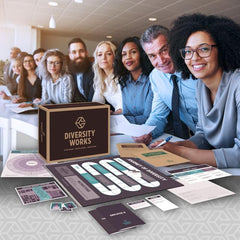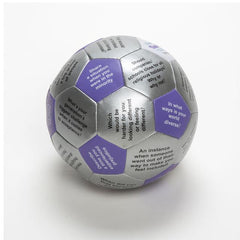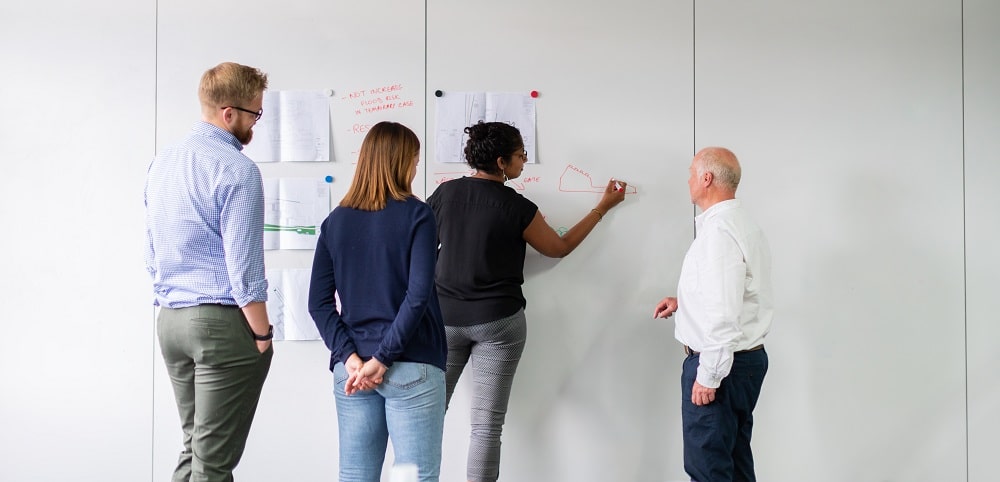
Share
Diversity Games for the Workplace
HRDQ StaffWelcoming diversity and promoting inclusion in the workplace should be a high priority. In fact, doing so is essential for shaping an accepting, positive company culture. Having a diverse team positively impacts creativity, innovation, adaptability, decision-making, employee engagement, and overall organizational success. If you’re ready to shift your focus to this important topic and cultivate a more accepting team with diverse backgrounds, a great place to start is with some diversity games for the workplace. Diversity games are a great team-building activity that gets people talking about this important subject. Here are some top diversity games from HRDQ and other inclusion activities that can serve as great ice-breakers or energizers in your diversity training sessions.
HRDQ offers a wide selection of diversity & inclusion training materials, from assessments to comprehensive workshops, games, and more. View our full diversity training today!
Why Diversity Matters in the Workplace

Beyond the fundamental principles of respect and equality, forming a company culture that is fully accepting of diversity is necessary for a variety of reasons:
-
Respect. First and foremost, each and every employee deserves an equal level of respect, regardless of their background. You should expect your employees to treat each other as equals to foster a non-hostile work environment, eliminate misconceptions, and promote positive
communication. - Discover new solutions. Successful organizations know that creative solutions are often discovered through collaboration with those of different backgrounds – diverse teams often make better decisions. Harnessing the varying perspectives of unique individuals will help your teams thrive as you avoid groupthink.
- Improve employee retention. A diverse workforce brings together individuals with varied perspectives, backgrounds, and experiences. This diversity of thought fosters creativity and innovation, as employees approach challenges and problem-solving from different angles.
Diversity Games from HRDQ
Now that you know why diversity matters in the workplace, explore these diversity games for workplaces from HRDQ. These games provide a fun, engaging way to get your employees acquainted with this important topic and more comfortable with sharing their ideas.
Diversity Works

Say “goodbye” to dry, impersonal training materials, and say “hello” to this fun, interactive diversity game! Diversity Works aims to actively engage adult learners through station-based activities tailored to various learning preferences, interaction styles, and technology choices. Combining experiential, social, and emotional elements, this learning style model encourages the exploration and absorption of new ideas related to inclusivity and diversity.
To play Diversity Works, stations are set up around the room, with each station featuring a different learning activity. Players can choose whatever station they’d like to participate in, but ultimately, each covers one of three main learning objectives:
- Communication. Participates will learn how to speak to one another in ways that are respectful of cultural differences.
- Understanding self. Employees should have a grasp on what makes themselves a unique individual so they can begin to expand their perspectives.
- Understanding others. Being able to recognize and respect the unique differences of others is imperative for creating a positive and cohesive workplace.
By working individually, with a partner, and in groups, learners will tackle the various competitive, problem-solving, and reflective activities set up at the stations. Once complete, everyone will come together to discuss what they’ve learned and participate in a final diversity and inclusion board game. Diversity Works can be played with up to 25 people, making this game a valuable diversity activity for teams.
Diversity Thumball

Thumballs serve as an excellent icebreaker and conversation starter, adding universal appeal and energy to any training session. Get the discussion on diversity rolling with the use of the Diversity Thumball training game. On each panel of the ball, there’s a thoughtful prompt designed to get your employees talking.
Here's how to play:
- Toss the ball.
- Ask the person with the ball to answer the prompt their thumb lands on when they catch it.
- Continue to toss the ball around the room, answering the questions as you go, until each learner has participated.
This game is a great way to discuss a variety of difficult topics in a low-pressure environment. Some of the key diversity topics the game touches on includes:
- Listening and responding in ways that validate and make others feel heard
- How to critique ideas, not people
- Respectfully agreeing to disagree
- Ending unnecessary personal attacks
By the end of this diversity game, participants will have a better awareness of their coworkers and a strong introduction to welcoming diversity.
DIY Diversity Training Games

It’s always better to implement training materials that have been tested and proven to produce results. However, if you’d like to try out some diversity training games on your own, consider the following options:
Flower Power
For this fun diversity game in the workplace, take the following steps:
- Split participants into groups of four to ten.
- Give them art supplies, including a large piece of paper and markers.
- Ask them to draw a large flower with a circular center and petals. There should be an equal number of petals as there are group members.
- Ask each team member to fill a petal with a quality that is unique to them. Discourage including qualities regarding physical appearance.
- In the middle of the follower, ask participants to write down a quality that each team member has in common.
- Come together for a group discussion. Each group can present their flower and discuss the similarities and differences they discovered.
I Am, But I Am Not
The game I Am, But I Am Not tackles misconceptions head-on. Here’s how to play:
- Provide each participant with a piece of paper and writing utensil.
- Ask them to create two columns, with one titled “I Am” and the other titled “But I Am Not.”
- Ask them to fill in the columns with true statements about themselves. For example, someone might write, “I am a male, but I am not emotionless.” Or, “I am a female, but I am not weak.”
- Ask participants to volunteer their responses to start a great discussion on diversity.
The responses can be quite personal, so it's crucial to approach them with sensitivity and kindness when individuals express a willingness to share. Understanding the personal nature of these answers underscores the importance of creating a safe and supportive environment, where people feel respected and comfortable opening up.
Promote Diversity & Inclusion in the Workplace with HRDQ

These diversity games for the workplace are a great introduction to this important topic. If you’re ready to take further steps toward improving and welcoming diversity, explore the full HRDQ Diversity & Inclusion training collection. In order to see real change, you need to dive deeper into developing a more open company culture. Our training consultants are here to equip you with the tools you need to promote and encourage diversity and inclusion throughout the workplace.



















































![[Guide] Mapping the Path of Erikson's Developmental Process](http://hrdqstore.com/cdn/shop/articles/Eriksons_Developmental_Process_520x500_9915a36f-58b9-4f82-aa72-8ab099a7d229.jpg?v=1741640982&width=500)

